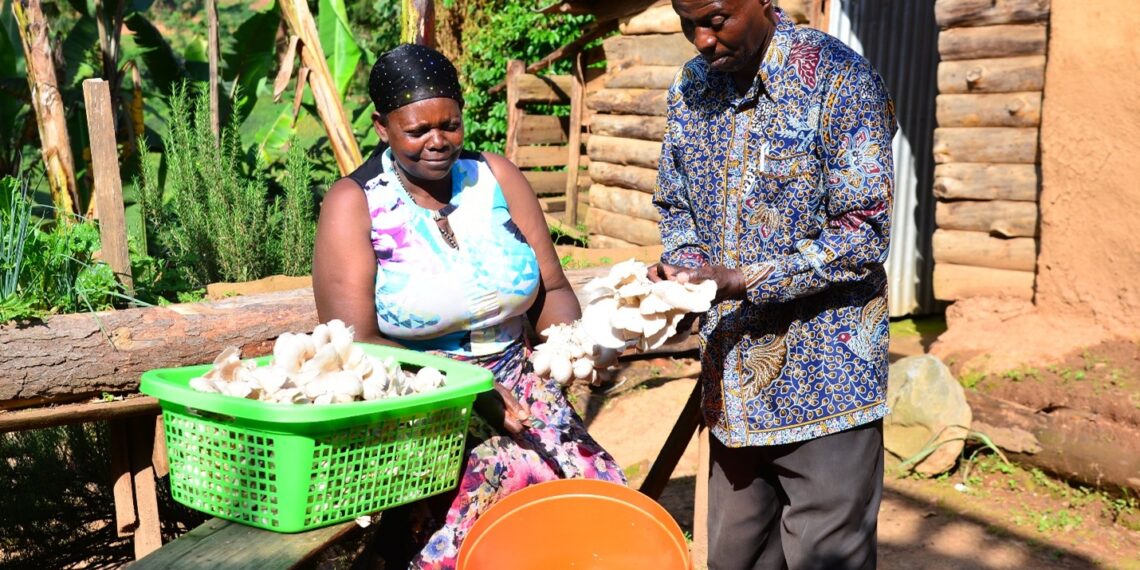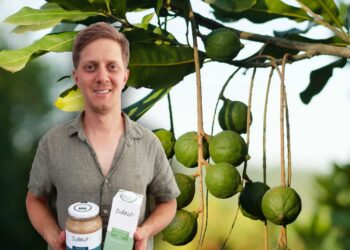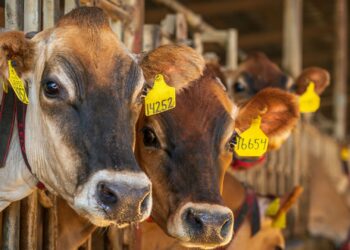In Uganda’s Rukiga district, a quiet transformation is taking root – one that is rewriting the future of rural livelihoods, revitalising wetlands, and helping save the iconic but endangered Grey Crowned Crane. The unlikely hero at the centre of this success story? The humble oyster mushroom.
It began as a seemingly far-fetched idea. The International Crane Foundation, renowned for its global efforts to protect cranes and their ecosystems, partnered with three local farming groups in mid-2024 to pilot a new project.
The goal: offer rural Ugandan communities a sustainable, alternative income stream that wouldn’t depend on harvesting resources from nearby wetlands, the crucial breeding ground for cranes.
For generations, these communities have relied on farming staples like beans, Irish potatoes, and sorghum – crops that take months to mature and yield meagre returns. A single sorghum harvest, for example, takes six months and yields approximately $53 (just less than R1 000).
In the face of poverty, limited land, and poor soil fertility, some farmers had begun encroaching on wetlands for farming and firewood collection, threatening the fragile balance of the ecosystem and putting the survival of the Grey Crowned Crane at risk.
That’s where mushrooms came in.
“Mushroom cultivation emerged as the perfect solution—it requires minimal space, can be done year-round, and doesn’t depend on clearing wetland vegetation,” said Patrick Engoru, the International Crane Foundation’s Uganda country manager.

The initiative involved training local farmers to grow oyster mushrooms using agricultural by-products like sorghum husks as a growing medium. The startup costs were low – around $31 (about R550) for mushroom spawn – and within three months, a farmer could potentially earn more than $125 (about R2 200) from sales. Compared to traditional crops, the turnaround time and profits were revolutionary.
At first, the idea was met with hesitation, even ridicule.
“Before growing mushrooms, I thought people would not buy them as they were not common in the villages,” said Tumuhimbise Kedress, a member of Rwempango Tukwataniise, one of the participating groups. “When we started growing mushrooms, many community members would see me going to our growing site, and they would start pointing at me and laughing.”
But that initial scepticism quickly gave way to admiration. As mushroom harvests began yielding reliable income, neighbours who once mocked the growers became regular customers. The mushrooms, it turned out, were not only nutritious but also versatile – fitting seamlessly into Ugandan dishes like katogo as a protein substitute, helping families save on meat costs.
Beyond the financial uplift, the impact of the mushroom project has been deeply personal for many families.
Related stories
- Cape couple cultivates thriving exotic mushroom business
- Disability is no barrier for bold mushroom farmer Nkalanga
From meals to miracles
One widow, known as Ellen, used her earnings to ensure her children had consistent meals and made critical upgrades to her home. Another participant, a retired teacher named Vanansio, described the transformation with a sense of awe and gratitude.
“I don’t even know where to start talking about this mushroom-growing project. It has done me wonders and miracles which I never expected. My dream is to work harder and make my children, who are still in school, finish from good schools.”
For others, the experience has ignited broader dreams of collective empowerment.
“One community member dreams of starting a women’s organisation to help women get start-up money to fund their small businesses,” shared Engoru, pointing to the project’s ripple effects in building resilience and self-reliance across households.
Environmentally, the dividends are just as significant. The use of agricultural waste like sorghum husks, which were previously burned, now forms the substrate for mushroom growing. While the cooking process still relies on firewood ‒ producing some smoke ‒ the overall environmental footprint is far smaller than that of traditional farming encroaching on wetlands.
“The project has yielded environmental dividends that extend beyond the communities to benefit cranes and wetlands,” said Engoru.
Most notably, where mushroom farming has taken off, the International Crane Foundation has observed a reduced wetland encroachment. This creates a virtuous cycle: healthier wetlands provide better habitat for the Grey Crowned Crane, which in turn supports water regulation and biodiversity.
READ NEXT: Taste tradition: Chefs lead revival of climate-smart indigenous foods
Sign up for Mzansi Today: Your daily take on the news and happenings from the agriculture value chain.
















